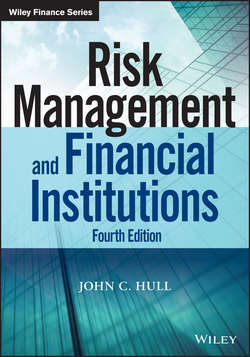Читать книгу Risk Management and Financial Institutions - Hull John C. - Страница 14
На сайте Литреса книга снята с продажи.
CHAPTER 1
Introduction
SUMMARY
ОглавлениеAn important general principle in finance is that there is a trade-off between risk and return. Higher expected returns can usually be achieved only by taking higher risks. In theory, shareholders should not be concerned with risks they can diversify away. The expected return they require should reflect only the amount of systematic (i.e., non-diversifiable) risk they are bearing.
Companies, although sensitive to the risk-return trade-offs of their shareholders, are concerned about total risks when they do risk management. They do not ignore the unsystematic risk that their shareholders can diversify away. One valid reason for this is the existence of bankruptcy costs, which are the costs to shareholders resulting from the bankruptcy process itself.
For financial institutions such as banks and insurance companies there is another important reason: regulation. The regulators of financial institutions are primarily concerned with minimizing the probability that the institutions they regulate will fail. The probability of failure depends on the total risks being taken, not just the risks that cannot be diversified away by shareholders. As we will see later in this book, regulators aim to ensure that financial institutions keep enough capital for the total risks they are taking.
Two general approaches to risk management are risk decomposition and risk aggregation. Risk decomposition involves managing risks one by one. Risk aggregation involves relying on the power of diversification to reduce risks. Banks use both approaches to manage market risks. Credit risks have traditionally been managed using risk aggregation, but with the advent of credit derivatives the risk decomposition approach can be used.
